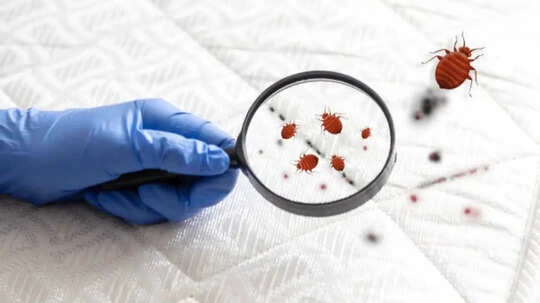There has been a potential bed bug infestation reported at Google’s Chelsea campus in Manhattan, as at least 12 people reported falling sick earlier this week.
The tech giant is reported to have taken measures to contain the outbreak, prompting immediate action.
An email from Google’s environmental, health, and safety team, obtained by WIRED, confirmed that exterminators and a sniffer dog found “credible evidence” of bed bugs in the office. Employees were told to avoid the office until the treatment was complete. According to the mail, even a sniffer dog was brought in to detect the invaders, confirming their presence.
After the extermination process was completed, news reports said the employees returned the next day. However, the incident has raised important questions about how bedbugs affect human health, especially in workplaces where huge numbers of people gather.
What are bed bugs?
Bed bugs, also known as Cimex lectularius, are tiny insects that bite people and animals to get blood for food. They are parasites and need human hosts to supply them with food. These insects are small and reddish-brown in colour and are wingless, flat, and about the size of an apple seed when fully grown.
While they do not transmit diseases, their bites can cause itchy welts and discomfort, and their presence can lead to psychological distress. They can be found in various locations and hide in cracks and crevices, making infestations difficult to eliminate. According to experts, young bugs are white-to-yellow in color or appear translucent if they have not been fed. Bed bug eggs are very small, about the size of a pinhead, and are a pearly white colour.
If an egg is more than five days old, it is marked with a black dot on a white egg. A female bed bug lays 200 to 500 eggs during its lifetime, so even a few bed bugs in your home can quickly turn into an infestation.
How would you know if you have bed bugs?
Your first obvious sign might be a bed bug bite. If you have a bite and want to verify if you have bed bugs, check for signs of an infestation, including:
- A sweet, musty odour
- Reddish or rust-colored stains on bed sheets, sleepwear, or nearby objects. This is what bed bugs excrete after eating, essential bed bug poop
- Bed bug exoskeletons – the skeleton they shed after molting
- Live bed bugs in the folds of bedsheets and mattresses
Bed bugs move more slowly than other small bugs, so pay attention to the speed of the bug you find to help with identification.
Signs and symptoms of bed bug bites
A few signs and symptoms of bed bug bites include:
- Extreme itchiness
- Raised skin that resembles a pimple or a rash
- Burning sensation
- inflammation
- Mild pain and discomfort
According to doctors, you may not feel a bed bug bite when you are sleeping. They have another defense system that prevents you from feeling you’ve been bitten. They inject an anesthetic and an anticoagulant into your skin when they bite. You may not notice you’ve been bitten until the bite marks appear, which can take from one to a couple of days after the bites.
In rare cases, bed bug bites can cause serious reactions. Signs of a serious, even life-threatening reaction to bed bug bites include:
- Breathlessness
- Swollen tongue
- Blisters
- High fever
- Irregular heartbeat
